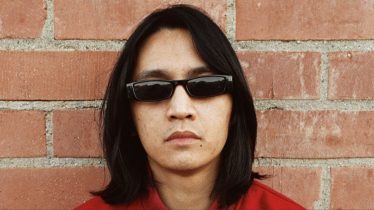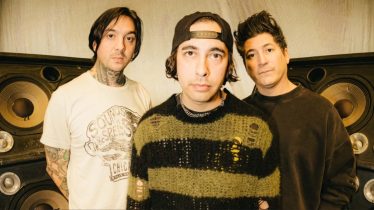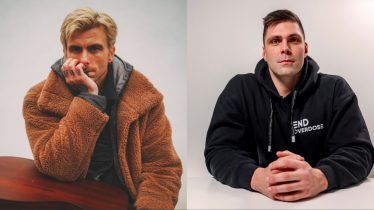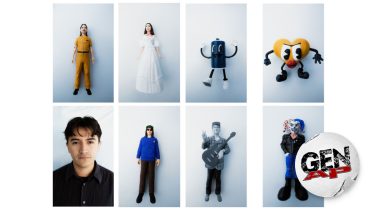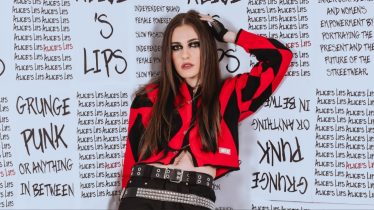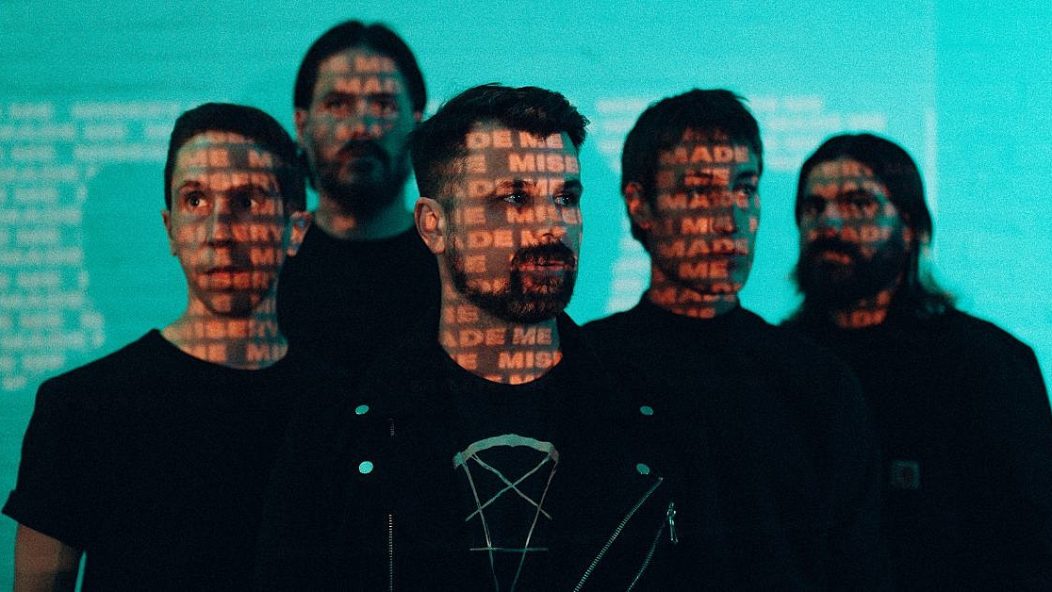
Silverstein: “We do not want to be afraid to try new sounds, textures and ideas”
On an unseasonably hot April day in Southern California, Shane Told is just hours away from taking the stage with his band of over 22 years. Silverstein are today on tour supporting headliners and best friends Beartooth. Outside, fans are already gathering in anticipation of doors opening; backstage, where Told connects with Alternative Press, it is quite possible that Silverstein themselves are even more excited to be in the midst of one of their first tours since the pandemic stopped them in their tracks two years ago.
Silverstein are no strangers to touring. In fact, this is a band that have easily rattled off 200-plus shows in any given year, a testament to their hardworking and dedicated ethos. The band have even more to celebrate right now, though; a month from our meeting, they will be from releasing their 10th studio album, Misery Made Me, a collection of songs that capture the mental state of a band confronting and eventually accepting the worldwide uncertainty felt at many points during the pandemic. And Told doesn’t need to speak for long for it to become abundantly clear that the journey of the last two years shaped Silverstein in more ways than one.
Read more: Silverstein drop “Live Like This” featuring nothing,nowhere., share 2022 tour dates
In March of 2020, Silverstein released their ninth record, A Beautiful Place To Drown. Projected to be the band’s biggest release to date thanks to an increasingly modern sound, anthemic and accessible tracks and a host of high-profile guest appearances, it found itself on the receiving end of praise from critics and fans alike. Beyond the release of the record, the band were also on a massive world tour in celebration of their 20th anniversary.
The universe, of course, had other ideas, and the best-laid plans ground to a halt. When Told and the rest of his bandmates — guitarists Paul Marc Rousseau and Josh Bradford, bassist Billy Hamilton and drummer Paul Koehler — returned home, they would experience the first downtime in their career since the early 2000s. During this time, Told felt the all-too-familiar sense of isolation and lack of hope, with no light at the end of the tunnel in sight. It’s these feelings that directly informed the writing process of the record the band began to make a year-and-a-half into the pandemic.
Read more: nothing,nowhere. shares new “MEMORY_FRACTURE” video directed by Code Orange—watch
While Silverstein sheltered in place at a remote studio on a Native reservation in Ontario, Canada, the quintet lived and breathed the record with no outside distractions. While A Beautiful Place To Drown was their most pop-leaning and radio-friendly material to date, the lessons of its creation pervade Misery Made Me. It’s a record that, while just as infectious and catchy as its predecessor, is also coupled with the group’s heaviest and most experimental music of their career.
On tracks such as “Die Alone” and the genre-bending “The Altar/Mary,” listeners catch a glimpse of the band at their most vulnerable and aggressive, while “Ultraviolet” displays radio-rock mastery and closer “Misery” delivers introspective intimacy. One cannot help but think that Silverstein have finally found the balance between their core sound and necessary risk-taking. The result is a record that feels like the Silverstein fans know and love, but with more musical freedom and a means to fire on all cylinders with whatever sonic avenue they’re on.
In recent years, Silverstein have ventured into far more experimental territory than ever before. However, with your previous release, A Beautiful Place To Drown, it almost felt like the band were testing the waters, so to speak, about incorporating modern sounds and writing more pop-centered material. Would you say that Misery Made Me is a continuation of that, but taken even further?
I think so. The motto over the past couple of records has been “more everything.” We do not want to be afraid to try new sounds, textures and ideas. Early on in our career, and coming from punk and hardcore, there were a lot of rules and parameters of what you were allowed to do as a band. We were very conscious of those things; even with [Silverstein’s 2005 breakout single] “My Heroine,” having that keyboard line on it, I remember us wondering if we were even allowed to have keyboards on our songs.
That was on our second record, and when we went into recording A Beautiful Place To Drown, every time we did something a little out of our comfort zone, not only did we enjoy it, but the fans did too. It made our music more interesting and dynamic, so we realized we had nothing to be scared of. With this new record, we found a way to mix the modern in conjunction with our classic sound more. Tracks like “Die Alone” and “The Altar/Mary” are aggressive songs, whereas the last record was much less aggressive.
Speaking of aggression, the vocal performances on Misery Made Me might be your most raw, visceral and intense to date, especially during the heavier portions of the record. Where did this come from?
I wouldn’t say that I’m a naturally gifted screamer. [Laughs.] I didn’t even know how to scream when I joined the band, but I started to develop it over the years. On our 2011 record Rescue, I started opening my mind up to different ways I could project my voice, which wasn’t just full-on guttural screaming. It took me a while to figure out, partly due to me being self-conscious about my scream, but it all depends on what the song calls for. To reference “Die Alone” again, it was written during prime frustration in the middle of the pandemic and this “fuck my life” moment. I did the demo for the song in my basement, and I was very upset and angry, yet it captured something really honest.
When it came time to make the record, I knew I had to harness that feeling again, remember where I was at the time and beat the demo with the same power and energy. There’s another moment in the song “Bankrupt” where I just scream the word “fuck,” and it happened like that because that is how I felt. We just captured an honest moment, and those kinds of things are all over this record.
In addition to the band exploring new sounds with this record, you also have a considerable amount of guest vocalists and co-writers who make appearances. Was this in some ways due to the modern music landscape being so collaboration-heavy, and was this process exciting?
Yeah, it goes back to what I was saying about those unwritten rules we thought we had to follow. We thought co-writers were something Britney Spears or Backstreet Boys would do, and we never considered it for the first seven or eight records. Our chief songwriter Paul Marc Rousseau had Zoom calls with other people during the pandemic, and he and Cody Quistad from Wage War ended up writing “Ultraviolet,” which is probably the best song on the record, and they wrote it all in one day. In terms of collaborations, with everyone from nothing,nowhere., Mike Hranica of the Devil Wears Prada to Trevor Daniel, they all had different stories behind them.
When I picture the recording process of this record, I can feel the tension from the current state of the world, but at the same time, I hear a sense of freedom in the music. That being said, what were those “lightning in a bottle” moments while creating the record?
We recorded this record a year-and-a-half into the pandemic, and shit was still weird, especially in Canada. However, it was a really great experience to lock ourselves in the studio and live there. The studio was on a Native reservation, and it was always just the five of us, including our producer Sam Guaiana, hyperfocused on the record we were creating and being together to talk about our experiences of what we were going through. Being able to vent with each other was really inspiring and created those lightning in a bottle moments.
Another song that jumps out to me is “The Altar/Mary,” which was two ideas that turned into one idea. It’s a very experimental song where we go from a very heavy place to an almost rap-influenced part with orchestral arrangements. The last track on the album “Misery” was a song that I had that started out very kumbaya, but we were able to turn it into this finger-picking, ambient ride that’s almost an indie-rock song. These were the kinds of songs that I don’t think would have happened if we weren’t in that environment or hadn’t gone through the last year-and-a-half of suffering along with the rest of the world.
What would you say is the most personal moment on the new record?
For me, it’s the last track, “Misery.” It really focuses on a time when I was at my lowest and didn’t know what was going to happen. Going back and listening to those lyrics reminded me of getting in my car just to drive around looking for something to do during the pandemic. Speaking for Paul Marc, who also co-wrote the lyrics on the album, there’s a line on the song “Live Like This” where he says “I don’t want to die, but I don’t want to live like this,” and that’s an extremely honest and to-the-point lyric that sums up where we were and how dark everything was.
Silverstein have been a band for over 22 years. You’ve undoubtedly seen so many different eras of the scene and its evolution. What do you make of the modern music landscape, and what is currently inspiring you about it in terms of artists that are leading the charge?
I do a weekly music podcast called New Noise with my friend Mike Howell where we count down the top five albums of the week. Every single week I’m hearing incredible new music, whether it’s a band like Spiritbox or Knocked Loose, who are both blowing people’s minds. I also love this newer band Dying Wish, who are doing what I think metalcore should be. I’m not of the opinion that music has had its day in the sun and has gotten worse; in fact, I think it’s getting better.
There’s still so much left to say, and people are more open about expressing their opinions, and now people are more supportive of that. However, to be honest, when I’m writing a song like “Die Alone,” I’m also thinking of classic bands like Strife, Good Riddance or Snapcase, and those are my influences of the time when I was a sponge soaking those up. There’s something about those early influences that really stick with you, and that’s part of what makes our band: We’re a sum of our influences.
Throughout your two-decade-plus career, you have managed to keep the same consistent lineup with the exception of guitarist Neil Boshart’s departure in 2012. Why do you think that is?
Neil was a guy that really helped move our sound forward and add the metal and rock influence, with less of the emo side of things. I think that shaped what our sound became, but like a lot of things, he had a much different personality and view of the future than we did, which was a bit excluding for him. Musically, he also became less excited about what we were doing, and unfortunately, we parted ways.
It wasn’t easy, but fortunately, we had a guy who worked for us in our crew who grew up listening to records and was insanely talented, and that’s Paul Marc, who has now been in the band for 10 years, and we have done our best music since he joined. We’re the biggest that we’ve ever been, and that’s directly because of that. We all bring something different to the table and all have a say in the band, both on our creative and business sides. Of course, we do not always agree, but we always respect each other’s opinions, especially because we’re older now. It’s a great thing having five brains making the decisions we do and not just one person.
This interview appeared in issue 406, available here or below.
